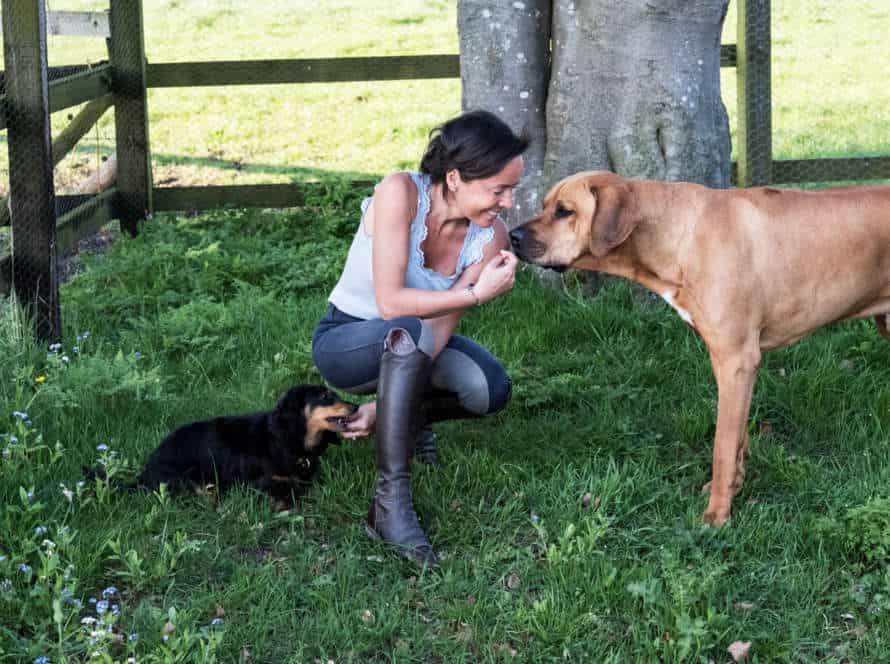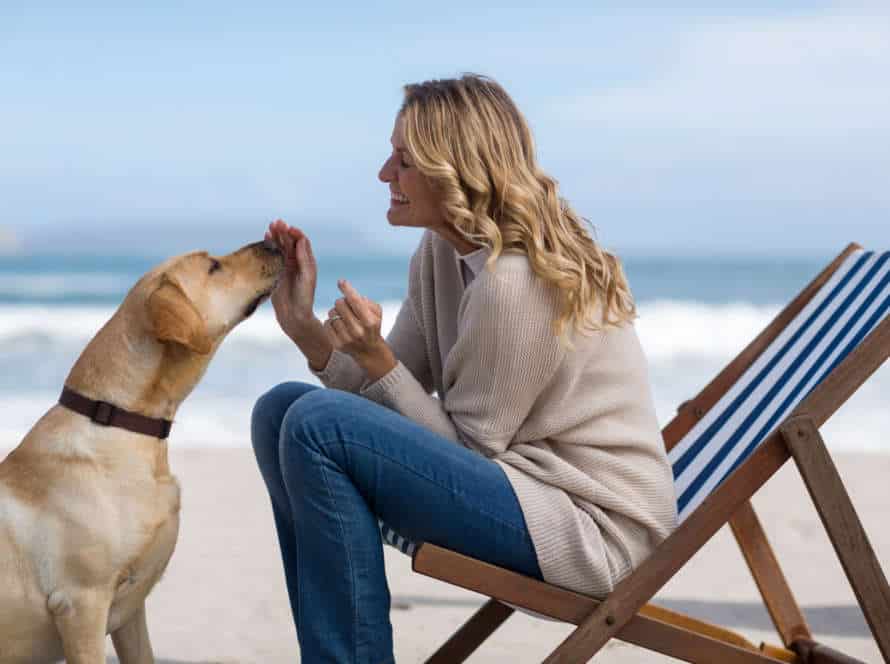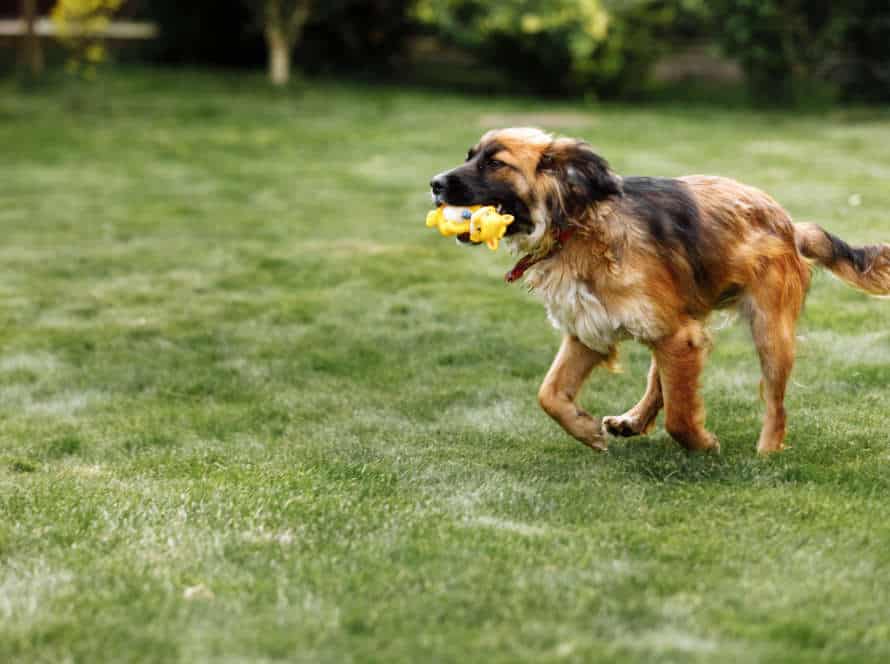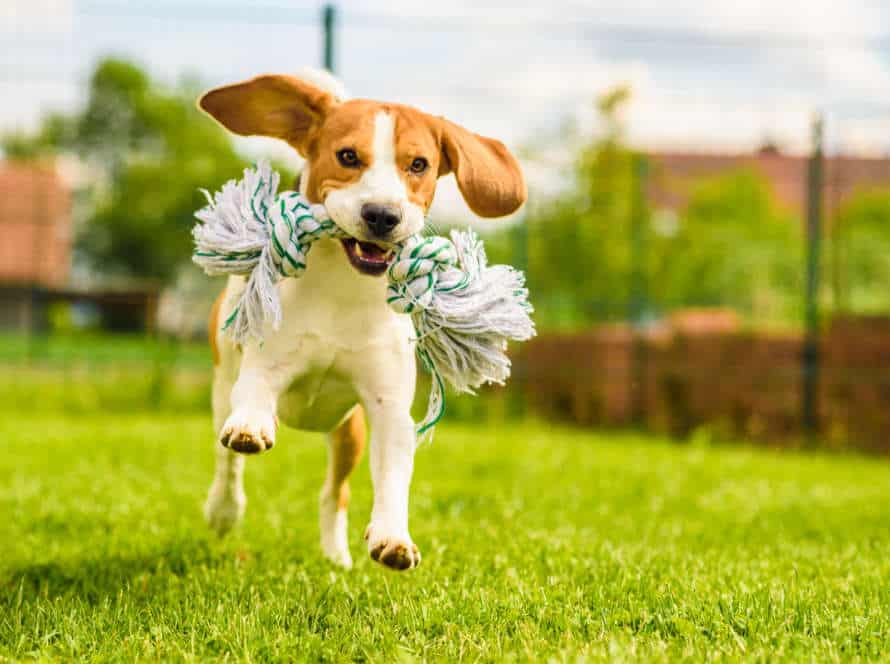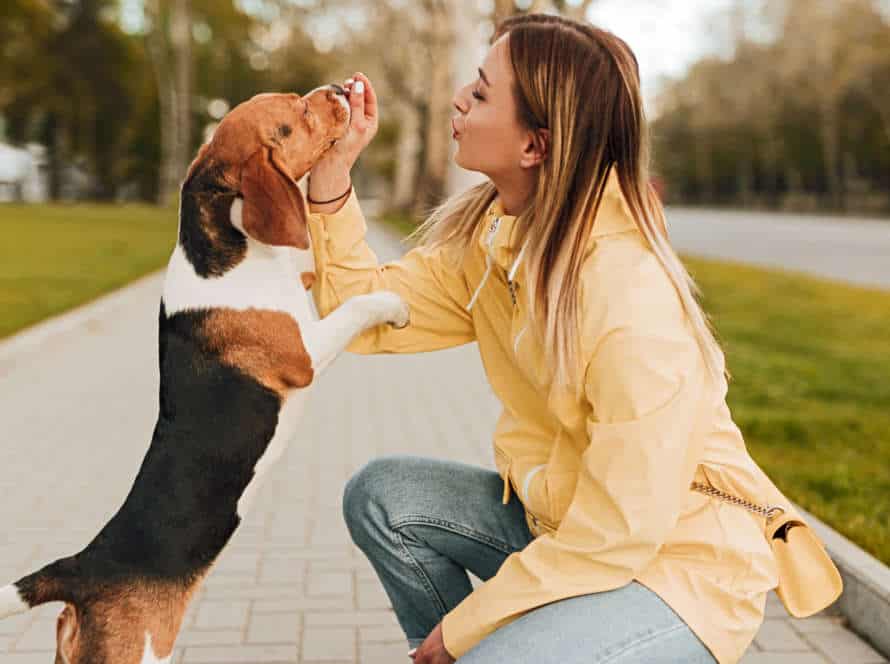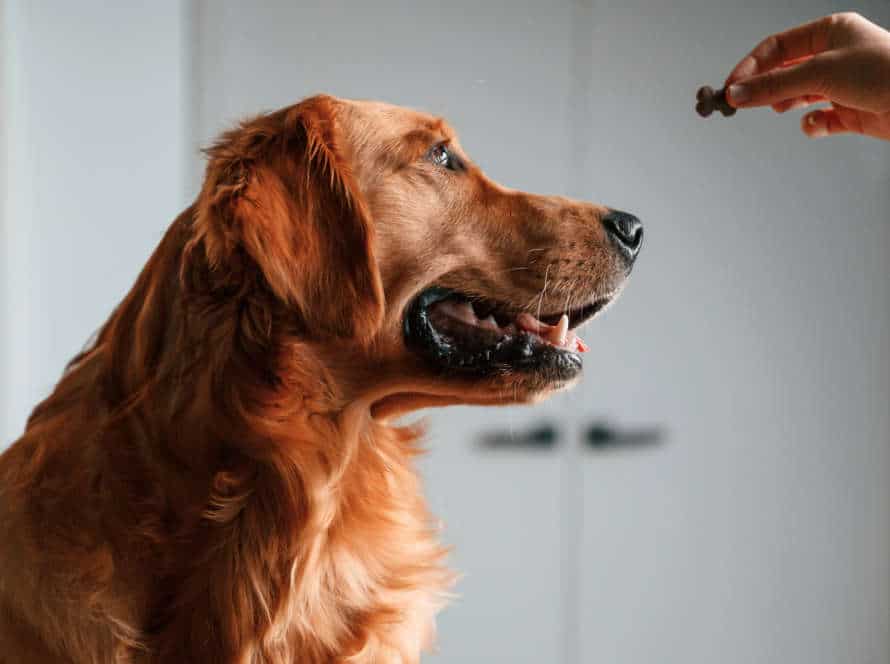Trust-Building Basics for Puppies: Start on the Right Paw
Building trust with puppies is important for training. Get started the right way to create a strong bond between the pup and their owner. Here are some tips:
- Socialization: Introduce the puppy to new people, animals, and places early. This helps them learn to trust different things.
- Positive Reinforcement: Reward good behavior with treats, praise, and playtime. This will help them connect good experiences with obedience.
- Consistency: Have consistent routines for feeding, training, and playtime. Puppies need a predictable and structured atmosphere.
- Respect Boundaries: Don’t push your pup into situations they don’t like. Give them space when needed. Respect boundaries to keep their trust.
Follow these steps to create a great relationship and make training a positive experience for both.
Encouraging Face-to-Face Introductions
To get your pup to trust you, an important step is introducing them to people. Make sure it’s a calm setting. Start by having you or a family member introduce the pup to one person at a time. By allowing them to meet people on their own terms, a trusting relationship can be built. This forms a strong foundation.
Make Introductions on Puppy’s Level
Introductions to puppies must be on their level. This helps create face-to-face connections and trust. Keep in mind the following tips:
- Approach from the side, not head-on.
- Crouch down to their level.
- Don’t reach over their head or look into their eyes.
- Let the puppy come to you, and offer a treat or toy.
- Be patient, let the pup sniff and explore.
- Stay calm, gentle and supervise children with the pup.
Use Soft Voices and Positive Reinforcement
Soft voices and positive reinforcement are essential to help puppies become friendly with new faces. Here’s how to do it:
- Speak in a gentle tone when introducing your pup to another dog or human.
- Give treats or praise when they act nicely towards the other.
- Don’t shout or scold if they show signs of being scared or mad. Instead, focus on something pleasing, like a toy or snack, and reward peaceful actions.
- As time passes, use kind words and rewards to create trust and confidence in your pup.
- It will result in happier and safer experiences in the future.
Pro Tip: Patience is the key! Allow the pup enough time to feel relaxed. Don’t push them into situations that may cause fear or aggression.
Avoid Overwhelming Puppy with Physical Touch
When it comes to puppy training, physical touch should be minimized. Though tempting, too much stroking or petting could make the pup anxious. To build trust, introduce face-to-face. Here are some basics:
- Sit or squat down to the pup’s level.
- Let them sniff your hand.
- Then pet gently on the head or behind their ears.
- Avoid touching their face.
- Keep it brief and positive. Give a treat, toy, or praise as reward.
Trust-building with a new pup takes time, patience and reinforcement.
Building Safe and Positive Spaces
Bringing home a new pup? Make sure that it has a positive space for safety and trust. Feeling safe and secure, the pup will be open to learning and exploring. This article has tips to create a great space for pup growth and learning.
Create Comfortable Spaces for Socialization
Create a comfy space for socializing! Ensure your pup feels safe, relaxed, and at ease. Here are a few trust-building basics:
- Provide a secure living area, with their bed, toys, and other items they know.
- Have people give treats, toys, and words of praise during socializing.
- Keep socializing sessions short. Increase duration as pup gets more comfortable.
- Introduce new environments and experiences bit by bit – no overwhelming.
- Reward pup for good behavior and socializing successes.
- Trust takes time and patience – create a positive space for pup to grow.
Pro Tip: Socialization is super important for pup development. Start early for a confident, well-adjusted pup!
Supervise Puppy Interactions
Supervise pup interactions for a secure and positive space. It helps your pup to grow and be healthy and happy. Follow these tips:
- Always monitor pup-dog or pup-human interactions.
- Reward good behavior with treats and compliments.
- Socialize in small doses, growing the exposure over time.
- Provide a safe spot like a crate or playpen where they can relax without disturbance.
Do this and your pup will be secure, happy and loved. They’ll grow into a content and joyous adult dog.
Utilize Toys and Treats to Encourage Positive Behaviors
Toys and treats are great for encouraging positive actions in puppies. Plus, they help create trust-building basics from a young age. Here’s how to use toys and treats to strengthen your bond with your pup:
- Positive reinforcement – Reward them with treats or toys when they do something good. E.g. coming when called or sitting on command.
- Interactive toys – Stimulate them with treat-dispensing toys, puzzles, or tug-of-war toys. This encourages playtime while building trust.
- Distraction – If your pup is showing an unwanted behavior, grab their attention with a toy or treat. This reinforces good habits.
Remember, having a strong and trusting relationship with your pup is key for a happy and healthy life together.
Promoting Healthy Play and Interaction
Play is a must for puppies and humans to communicate and trust each other. It’s a great way for puppies to engage in natural behavior with humans. It’s productive, rewarding and fun! Supporting healthy play and interaction will help create a strong bond between puppy and human. This bond teaches puppies the skills they need to fit into the family.
Understanding the Importance of Play in Trust-Building
Play is a must-have for building trust between puppies and their owners. It not only boosts bonding, but also promotes healthy growth. It’s a great way to break the ice, helping your puppy to feel secure and safe around you. Plus, your pup can learn and explore in a safe space, and develop physical and mental skills.
Here’s how to promote healthy play and interaction with your pup:
- Short and frequent play sessions. Pups have short attention spans, so keep it short and consistent.
- Use toys and games that promote socialization and good behavior. Tug ropes, balls, and interactive puzzles are great.
- Plus, always go for gentle play and avoid roughhousing or too much force. Use treats as rewards for good behavior.
Trust through play is key for forming a long-lasting relationship based on love and respect. A happy pup is a healthy pup!
Teach Puppy to Play Appropriately with Other Dogs
Teaching a puppy to play nicely with other dogs is essential. This builds trust between your pup and other canines. Here are some tips to promote healthy play:
- Socialize your pup. Introduce them to many people, other dogs, and different locations.
- Keep an eye during playtime. Prevent aggressive behavior and redirect the pup’s attention to appropriate toys or activities.
- Teach your pet basic commands like “sit” and “stay”. This promotes good behavior when playing.
- Positive reinforcements are key. Use treats and praise for good behavior and discourage bad behavior.
- Allow breaks during play. Overstimulation can occur. Plus, it prevents the pup from getting too rough.
- Remember that each pup is special. Different techniques may be needed. Pro tip: Consult a professional dog trainer for personalized help.
Encouraging Appropriate Human Interaction and Socialization
Encouraging proper human interaction and socializing is very important for a pup’s healthy play and trust-building. Here are some tips to get you started:
- Start early – Socialize your pup between 3 and 12 weeks old. It’s their primary window. Expose them to new things, people and other animals.
- Go slow – Make sure socializing is a positive experience. Introduce new things gradually and let your pup take breaks if they appear uncomfortable.
- Praise and reward – Praise and reward your pup when they interact with new people, animals and experiences.
- Be consistent – Make socializing part of their daily routine. Frequent, brief interactions will help them become confident.
Remember, socializing is key to their wellbeing throughout life. So, invest your time and effort in building a trust-filled relationship from the start.
Strengthening Owner-Puppy Bond
Creating a trusting bond between pup and owner is key for a successful lifelong relationship. To start things off the right way, make sure all interactions are positive! Here we’ll cover the basics of how to build trust with your puppy.
Spend Quality Time Together
To build and strengthen the bond between you and your pup, quality time is essential. Here are some trust-building basics to get off to the right start:
- Playtime – Spend time with your pup playing, whether it be fetch or tug-of-war. Be present and let your puppy have fun. This will help build trust and link you to positive experiences.
- Training – Training offers a great opportunity to bond with your pup. It establishes communication, trust and mutual respect. Positive reinforcement such as treats and praise make training an enjoyable experience for both of you.
- Grooming – Grooming is also a chance to bond, especially during shedding seasons. Brush your pup’s coat, trim their nails, and clean their ears to maintain their health and hygiene.
Spending quality time with your pup through playtime, training, and grooming is fundamental for a strong and trusting owner-puppy bond. Pro tip: Building trust takes time, patience and commitment. You must be consistent, positive and loving in your interactions with your pup.
Provide Consistency and Predictability in Daily Routine
Consistency and predictability are key for bonding with your pup. Here’s how to get started on the right paw:
- Make a regular schedule for feeding, exercising, training, and playtime. Routine is essential for puppies and it will help them feel secure.
- Set clear rules and communicate them with positive reinforcement.
- Remain patient and gentle. Puppies are still learning, so avoid negative reinforcement and focus on encouragement.
- Spend quality time with your pup. Play, train, and cuddle to build trust and affection.
Build Trust through Training and Positive Reinforcement
Training + positive reinforcement are essential for building trust between dog + owner. Especially with puppies! Here are the basics:
- Consistency is key! Use same tone, body language + commands with puppy.
- Positive reinforcement! Reward puppy with treats, praise or playtime when they obey.
- Keep it fun! Use toys, treats + play to keep puppy engaged + motivated.
- Be patient. Remind yourself that puppies are still learning.
By training puppy with positive reinforcement, you build trust + help them become a loving family member. Pro tip: Take breaks during training to avoid overwhelming your puppy.
Identifying Potential Trust Issues
Introducing a pup? Consider trust issues you may face. Identify safe spaces for them to have a great experience and build their trust. Here are common trust issues puppies may encounter when in a new place. Plus, tips to craft a warm and inviting atmosphere.
Recognizing Signs of Fear, Anxiety, and Aggression
It’s important to recognize signs of fear, anxiety and aggression in puppies. These can show trust issues. Common signs include:
- Fear: Cowering, trembling, hiding and avoiding things/people.
- Anxiety: Excessive panting, pacing, whining and scratching.
- Aggression: Growling, barking, showing teeth and biting.
Note these signs and create a safe, secure environment for your puppy. Trust takes time and patience. With consistency and positive reinforcement, your bond will blossom.
Addressing Trust Issues with Professional Help
Addressing trust issues needs a pro’s help. It is a sensitive and complex thing that needs careful handling. To start addressing them in pets, identifying potential trust issues is key. Common signs of trust issues in puppies? Excessive barking/growling, not looking in the eyes, hiding, destructive/aggressive behavior.
To build trust with your puppy, start with a predictable routine, provide positive reinforcement and rewards, and give your pup space and time to explore. Patience and consistency are important. If trust issues persist despite your best efforts, help from a qualified animal behaviorist may be necessary.
Building Trust and Re-establishing Bonds After Trust Issues
Identifying trust issues is the first step to building trust. Some potential issues to look out for:
- Lack of socialization in younger years or trauma.
- Inconsistent training and discipline.
- Physical discomfort, illness, or abuse.
Once identified, trust can be rebuilt. Basics include:
- Consistent training with positive reinforcement.
- Regular exercise and playtime.
- Providing a safe and comfortable environment.
- Patience, understanding, and lots of love.
Frequently Asked Questions
Q: How can I build trust with my new puppy?
A: Building trust with a puppy starts with consistent training, positive reinforcement, and spending quality time with them every day. It takes time and patience, but by being gentle and showing love, your puppy will learn to trust you.
Q: How do I establish myself as the pack leader?
A: Be consistent with your puppy’s training and lead by example. Establish a routine, set boundaries, and communicate effectively with your puppy. Always reward good behavior and discourage bad behavior by redirecting your puppy’s attention and using positive reinforcement techniques.
Q: What are some common mistakes to avoid when building trust with a puppy?
A: Avoid punishing your puppy or using physical force as punishment. Also, avoid giving mixed signals by being inconsistent with training or allowing bad behavior at times but not at other times. Finally, don’t ignore your puppy’s needs for attention or affection.
Q: How can I prevent separation anxiety in my puppy?
A: Start by gradually increasing the amount of time your puppy spends alone, and make sure to provide plenty of toys, treats, and comfortable spaces in their designated areas. Also, stay calm and relaxed when leaving and returning home to avoid reinforcing anxious behaviors.
Q: What are some signs of trust between puppies and owners?
A: A puppy that trusts its owner will often show submissive behaviors, such as rolling over or exposing their belly. They will also seek out their owner’s attention and be eager to please them. A puppy that trusts its owner will also be relaxed and comfortable in their presence.
Q: How can I overcome a lack of trust with my puppy?
A: Start by identifying the root cause of your puppy’s mistrust and work on addressing it through consistent training and positive reinforcement. Provide plenty of attention, affection, and playtime with your puppy, and remain patient as building trust takes time.


